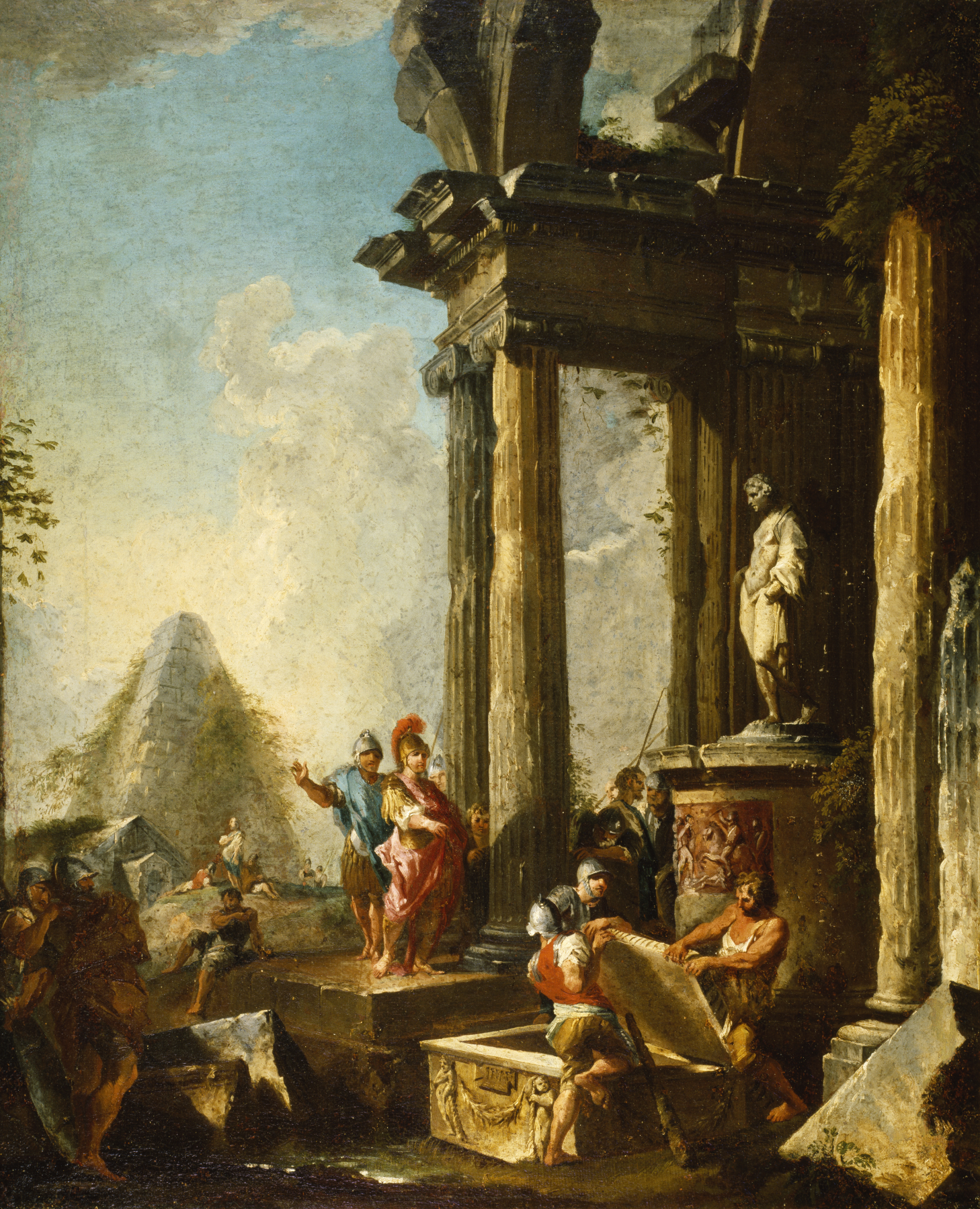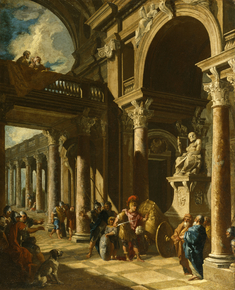Alexander the Great at the Tomb of Achilles
(Baroque Europe )
Alexander the Great (356-323 BC) is said to have ordered the tomb of Achilles (Greek hero in the Trojan War) to be opened so that he could pay homage to his legendary predecessor. Achilles's tomb was in what is today Turkey; to suggest an ancient setting outside the Roman world, Panini introduced an Egyptian pyramid in the background. The painting and its companion, "Alexander the Great Cutting the Gordian Knot" (Walters 37.516), represent Panini's fantasy of the grandeur of the ancient world.
For more information on this painting, please see Federico Zeri's 1976 catalogue no. 408, pp. 518-519.
Provenance
Provenance (from the French provenir, 'to come from/forth') is the chronology of the ownership, custody, or location of a historical object. Learn more about provenance at the Walters.
Don Marcello Massarenti Collection, Rome [date and mode of acquisition unknown] [1881 catalogue: no. 155; 1897 catalogue: no. 298]; Henry Walters, Baltimore, 1902, by purchase; Walters Art Museum, 1931, by bequest.
Conservation
| Date | Description | Narrative |
|---|---|---|
| 9/15/1941 | Treatment | repaired |
| 7/13/1962 | Treatment | coated; filled; inpainted; loss compensation; varnish removed or reduced; x-ray |
| 1/28/2004 | Examination | examined for condition; x-ray |
Geographies
Italy, Rome (Place of Origin)
Measurements
Painted surface H: 28 7/8 x W: 25 9/16 in. (73.3 x 65 cm)
Credit Line
Acquired by Henry Walters with the Massarenti Collection, 1902
Location in Museum
Accession Number
In libraries, galleries, museums, and archives, an accession number is a unique identifier assigned to each object in the collection.
In libraries, galleries, museums, and archives, an accession number is a unique identifier assigned to each object in the collection.
37.510





